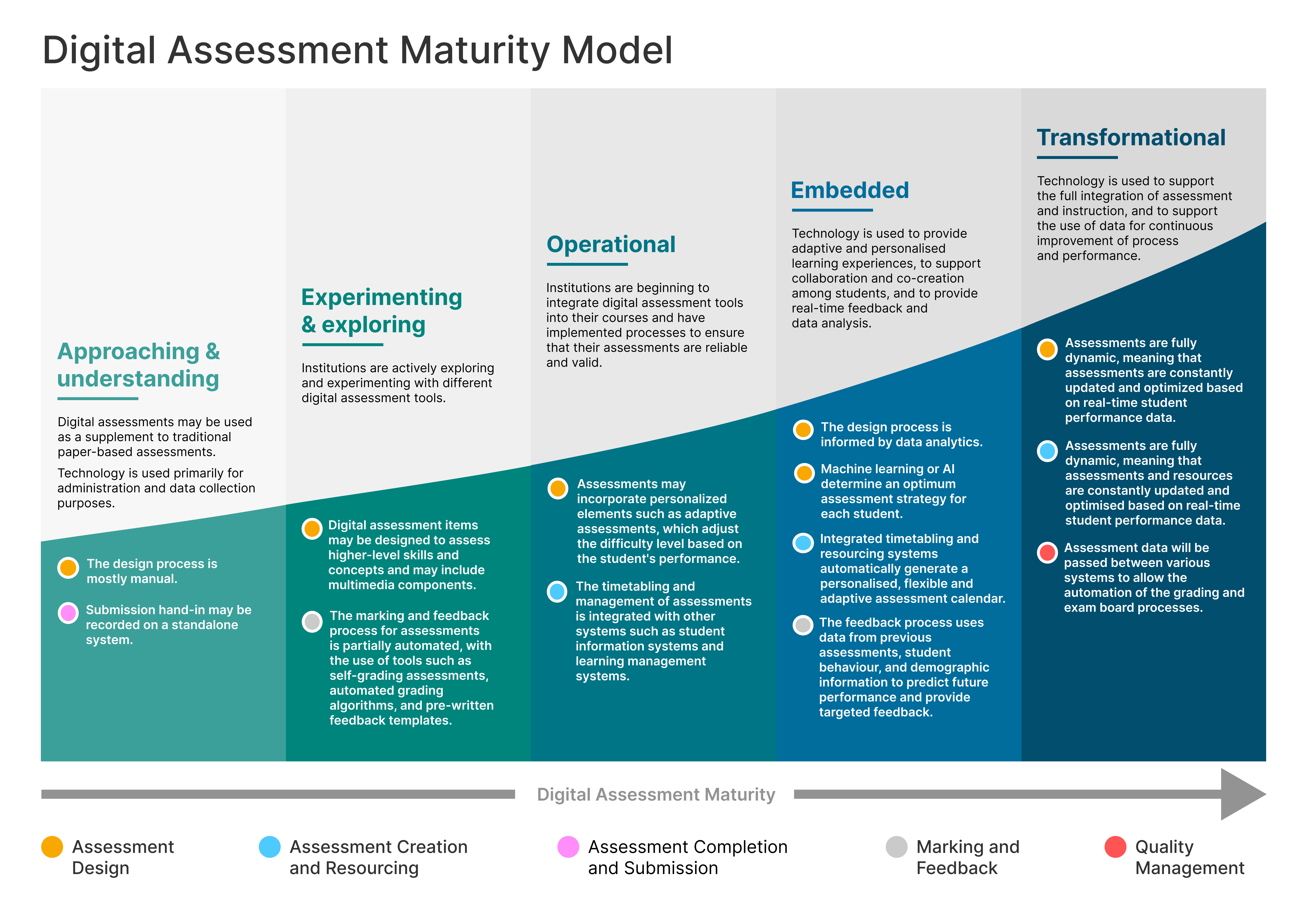As part of our work on a digital assessment maturity model, this post contains a more in-depth look at the completion and submission phase.

Assessment completion and submission
There may be no digital element of assessment at the approaching and understanding the completion and submission process. While students may use word processors or other software to generate their work, submission may be paper- or storage media-based. There is a limited use of technology to manage and track submissions; this is likely paper-based or a standalone system, such as a spreadsheet. In some instances, assessments are printed out for marking, feedback, and archival purposes.
At the experimenting and exploring stage, digital platforms are used for submission, such as email, Google Forms, OneDrive, or basic VLE tools — but this is not consistent. Managing and tracking of submissions is carried out within the system, and may provide students with a digital receipt or record of submission.
When digital assessment is operational, there is use of digital submission of assessments for most modes. Often there will be specialist assessment tools, such as Turnitin or Wiseflow. There may be a level of automated plagiarism checking or grading present, as well as the ability to provide instant feedback (especially in the case of MCQs). Late submissions are automatically flagged, and there may be a notification system for staff and students. There may be some level of automation of reasonable adjustments, but this may rely on significant manual intervention.
The embedded level is similar to operational, but practice is more consistent. The digitalisation of non-traditional assessments, such as videoing presentations or scanning artwork, may be more commonplace, allowing digital marking and feedback. There may be more robust policy and processes to govern submitted media and its archival.
Transformational digital assessment may include the use of analytics and data visualisation to explore long-term trends and personalise student support. Reminders or hints could be released based on student activity, e.g. flagging students who haven’t accessed content or module handbooks. The process for providing additional support or reasonable adjustments may be fully automated, based on student needs, assessment type, and support available. There may be some level of integration between assessment systems and the tool used to complete the assignment.
Read more
- Introduction
- Assessment design
- Assessment creation and resourcing
- Assessment completion and submission
- Marking and feedback
- Quality management

One reply on “Digital assessment maturity model: completion and submission”
[…] Assessment completion and submission v0.1 blog […]